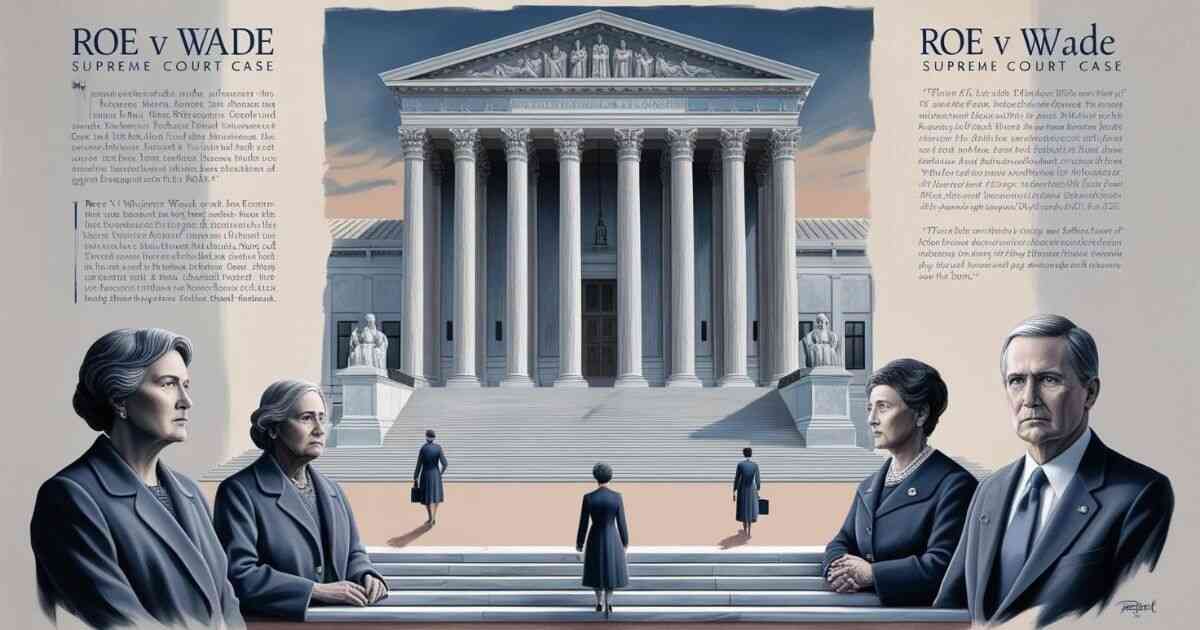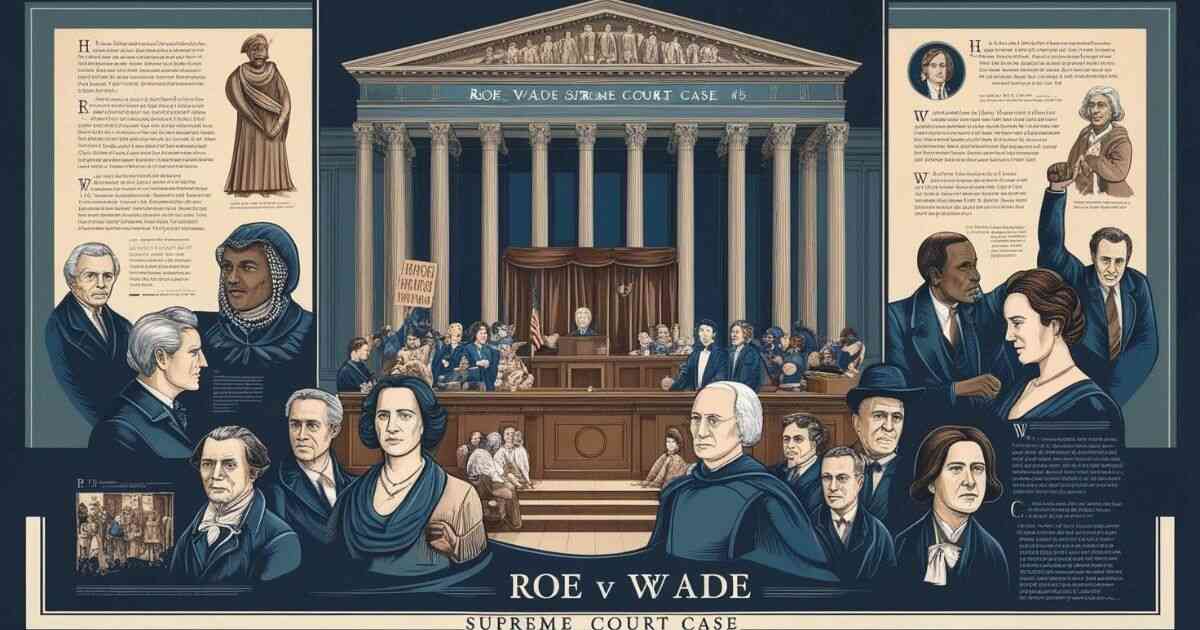
Roe v. Wade, the landmark 1973 Supreme Court ruling that legalized abortion throughout the United States, permitting the procedure up to the ninth month of pregnancy. However, beneath the surface of this pivotal decision lies a complex web of deceit, manipulation, and a lack of representation for the very individuals the case purported to champion.
This article delves into the true story behind Roe v. Wade, shedding light on the lives of Norma McCorvey (Jane Roe) and Sandra Cano (Mary Doe in the companion case Doe v. Bolton), and the legal framework that has had far-reaching consequences.
Related: The Evil Agenda Behind Feminism
The Story of Norma McCorvey (Jane Roe)
Early Life and Circumstances
The plaintiff in Roe v. Wade, known by the pseudonym “Jane Roe,” was actually a woman named Norma McCorvey. In 1969, McCorvey was a 21-year-old single woman living in Dallas, Texas. She faced numerous challenges:
- Financial struggles
- Regular abuse of drugs and alcohol
- Pregnant with her third child
McCorvey had already given up custody of her first two children – one to her mother and the other for adoption. When she became pregnant for the third time, she sought an abortion. However, at that time, abortion was illegal in Texas except in cases where the mother’s life was in danger.
The Fabrication and Manipulation
On the advice of others, Norma falsely claimed to have been gang-raped in an attempt to facilitate obtaining an abortion, one of many lies that would underpin the Roe v. Wade case. It was during this vulnerable period that Norma was approached by two ambitious young lawyers, Sarah Weddington and Linda Coffey, who were eager to challenge the abortion laws in America.
Over beers, with Norma five months pregnant and somewhat inebriated, the lawyers convinced her to file a suit against the abortion laws in Texas, with Dallas County District Attorney Henry Wade representing the state.
Get instant dream insight with our Free Dream Interpretation App
Weddington’s Admission and Norma’s Marginalization
Sarah Weddington would later confess to using Norma as a mere vehicle to present larger issues related to abortion rights, admitting that Norma’s total involvement in the case was signing a one-page affidavit stating her pregnancy and desire not to be.
Weddington even expressed regret over choosing Norma as the plaintiff if she had to do it over again. Notably, Norma was kept in the dark regarding the case’s progression and did not attend a single trial hearing.
The Irony of Weddington’s Actions
Ironically, Weddington was part of an abortion referral network in Texas, possessing the resources to facilitate Norma’s abortion. However, this was never disclosed to Norma, as it would have meant losing the plaintiff with the necessary legal standing to challenge the law. This withholding underscores the lawyers’ primary ambition: to challenge the abortion laws, rather than to assist Norma in obtaining an abortion.
Related: The Deceptive Lie All Women Are Led to Believe
The Birth of McCorvey’s Child
During the legal proceedings, Norma gave birth to a baby girl, who was subsequently placed for adoption. Thus, the woman at the center of Roe v. Wade never actually had an abortion, yet became an unwitting poster child for the abortion movement.
The Legal Journey to the Supreme Court
A three-judge panel in Texas initially ruled in favor of Weddington and Coffee. However, the state immediately appealed, and Roe v. Wade made its way to the Supreme Court.
Doe v. Bolton: A Companion Case
Alongside Roe v. Wade, the Supreme Court also considered another abortion case: Doe v. Bolton. The plaintiff in this case, known as “Mary Doe,” was actually Sandra Cano, a 22-year-old mother of three in Georgia.

The Story of Sandra Cano (Mary Doe in Doe v. Bolton)
Background and Circumstances:
Sandra Cano, a 22-year-old mother of three from Georgia, found herself pregnant with her fourth child. Seeking legal help to gain custody of her children from foster care and to divorce her husband, Sandra met with lawyer Margie Pitts Hames. However, despite Sandra’s intentions, Hames filed a suit on her behalf to obtain an abortion.
Allegations of Forgery and Misrepresentation:
Sandra vehemently maintains that she never wanted an abortion and claims that Hames either forged her signature on the abortion documents or deceitfully included it among papers related to her divorce and custody case. Upon discovering Hames’ true intentions, Sandra fled to Oklahoma to protect her unborn child.
Legal Proceedings and Outcome:
The lawsuit, Doe v. Bolton, challenged Georgia’s law permitting abortion only in cases of rape, severe fetal deformity, or threat to the mother’s life.
A three-judge panel declared portions of the Georgia law unconstitutional, and the case, along with Roe v. Wade, made its way to the Supreme Court. Similar to Norma, Sandra did not appear in court after the initial hearing and, ironically, did not have an abortion.
Related: The LGBTQ Agenda
The Supreme Court Ruling and Its Legal Framework
On January 22, 1973, the Supreme Court handed down its ruling in a landmark 7-2 decision, effectively legalizing abortion across the United States. Justice Harry Blackmun authored the majority opinion, inventing a legal framework based on an arbitrary three-trimester measurement of pregnancy.
This framework was not grounded in medical understandings of pregnancy or fetal development but served as a tool to justify abortion at different stages of pregnancy.
The Three-Trimester Framework:
- First Trimester: Abortion could not be restricted.
- Second Trimester: Restrictions could be made for so-called “health reasons.”
- Third Trimester: Abortions could be restricted entirely, with exceptions for cases deemed necessary to save the life or health of the mother.
Definition of Health in Doe v. Bolton:
Doe v. Bolton defined “health” so broadly as to include physical, emotional, psychological, familial health, and the woman’s age. This broad definition essentially allowed for justification of third-trimester abortions under almost any circumstances.
The Legal Foundation of Roe v. Wade & its Global and Legal Implications
The legal reasoning behind Roe v. Wade has been criticized by many legal scholars. Justice Blackmun’s argument ultimately concluded that a woman’s choice to have an abortion was covered under a supposed “right to privacy.”
Today, America stands as one of only seven countries worldwide that allows abortion for any reason through all nine months of pregnancy, highlighting the expansive nature of the Roe v. Wade ruling.
The Right to Privacy
This right to privacy has a weak legal foundation, originating from the 1965 case Griswold v. Connecticut. In that case, the Supreme Court decided that certain state restrictions on contraception were unconstitutional because of a right to privacy for married couples.
Justice William Douglas famously wrote that “penumbras formed by emanations” from various parts of the Constitution gave married couples this right to privacy. This vague concept was then extended to unmarried individuals in Eisenstadt v. Baird, and finally to abortion in Roe v. Wade.
The Personhood Question
One of the most significant aspects of the Roe v. Wade opinion is Justice Blackmun’s admission that if prenatal personhood is established, the case for abortion collapses. He wrote that if personhood is established, the fetus’s right to life would be guaranteed by the 14th Amendment.
This admission highlights the central ethical and legal question surrounding abortion: the personhood of the unborn child. This underscores the intrinsic link between the dehumanization of the fetus and the legal justification for abortion.
The Aftermath
Since the Roe v. Wade decision in 1973, over 60 million abortions have been performed legally in the United States. The decision has remained highly controversial, with ongoing legal challenges and debates about its constitutional validity.
McCorvey and Cano’s Later Lives
Both Norma McCorvey and Sandra Cano later became passionate pro-life activists:
- McCorvey stated, “I am dedicated to spending the rest of my life undoing the law that bears my name.”
- Cano pledged, “As long as I have breath, I will strive to see abortion ended in America.”
Conclusion
The true story behind Roe v. Wade reveals a complex web of personal struggles, legal maneuvering, and far-reaching societal implications. The true stories of Norma McCorvey and Sandra Cano reveal that the abortion movement, as exemplified by the Roe v. Wade case, has never been about truth, justice, or the empowerment of women.
Instead, it has consistently involved the exploitation of vulnerable women and the killing of their children, driven by selfish ambition and profit. As we reflect on the over 60 million children lost to legal abortion since 1973, the words of feminist leader Alice Paul resonate profoundly: “Abortion is the ultimate exploitation of women.”
The Legacy of Norma McCorvey and Sandra Cano
- From Pro-Choice to Pro-Life: Both women would later become passionate pro-life activists, dedicating their lives to undoing the harm they unwittingly contributed to.
- A Call to Action: As we honor the memory of Norma McCorvey and Sandra Cano, who have since passed away, we are reminded of their pledge to see abortion ended in America. It is now up to us to continue their mission, striving for a future where the value of every human life, from womb to tomb, is unequivocally recognized.






